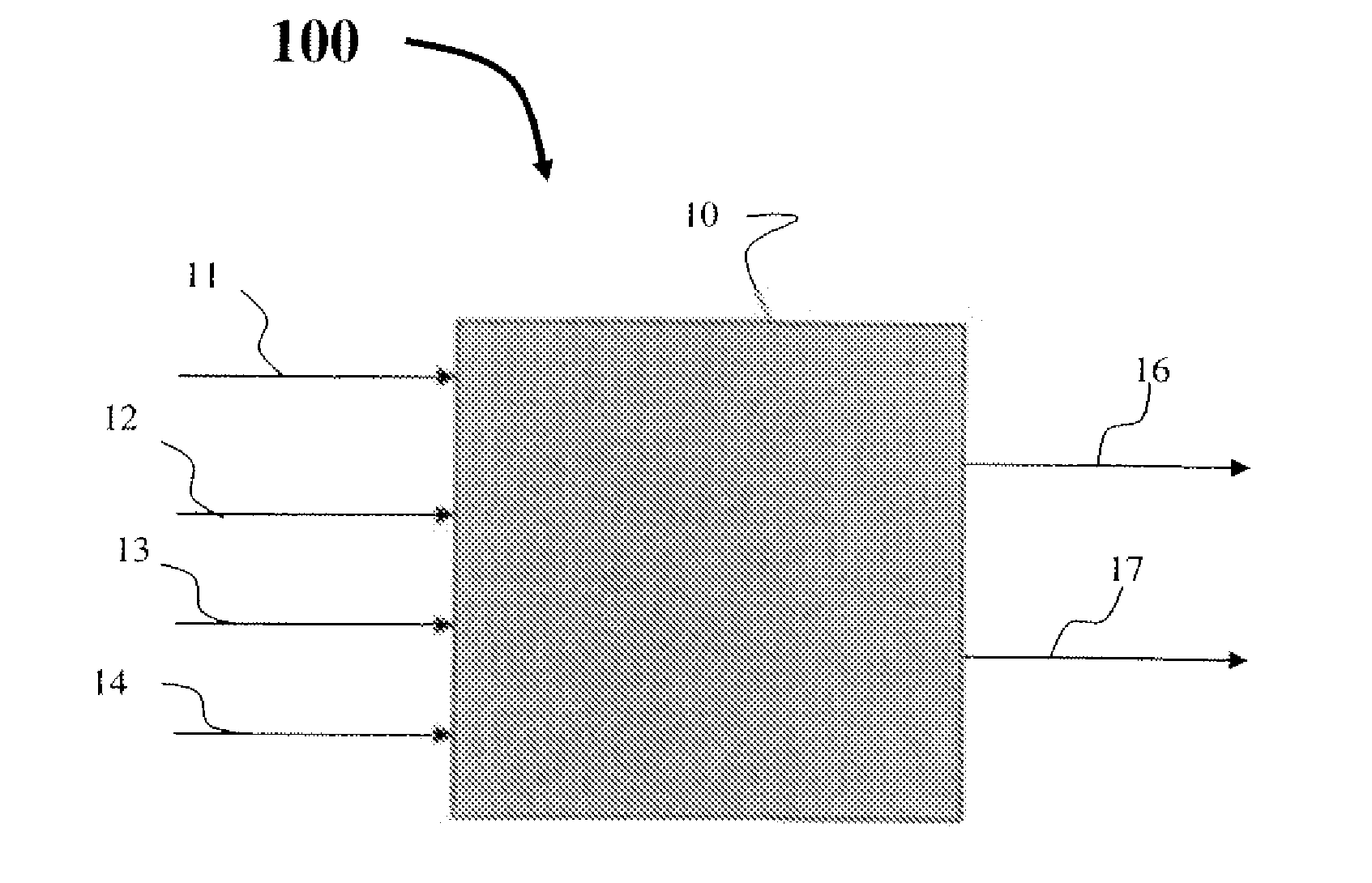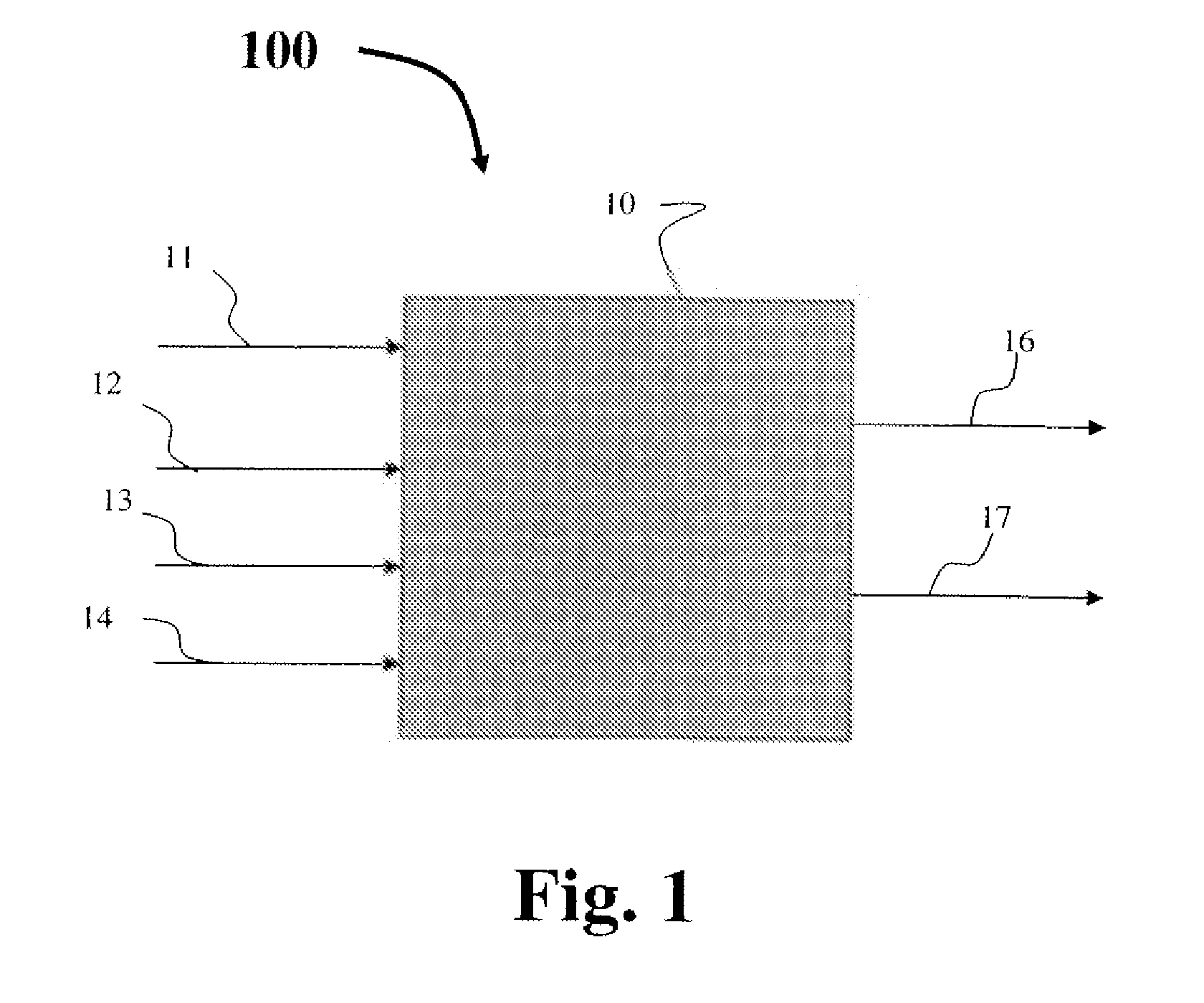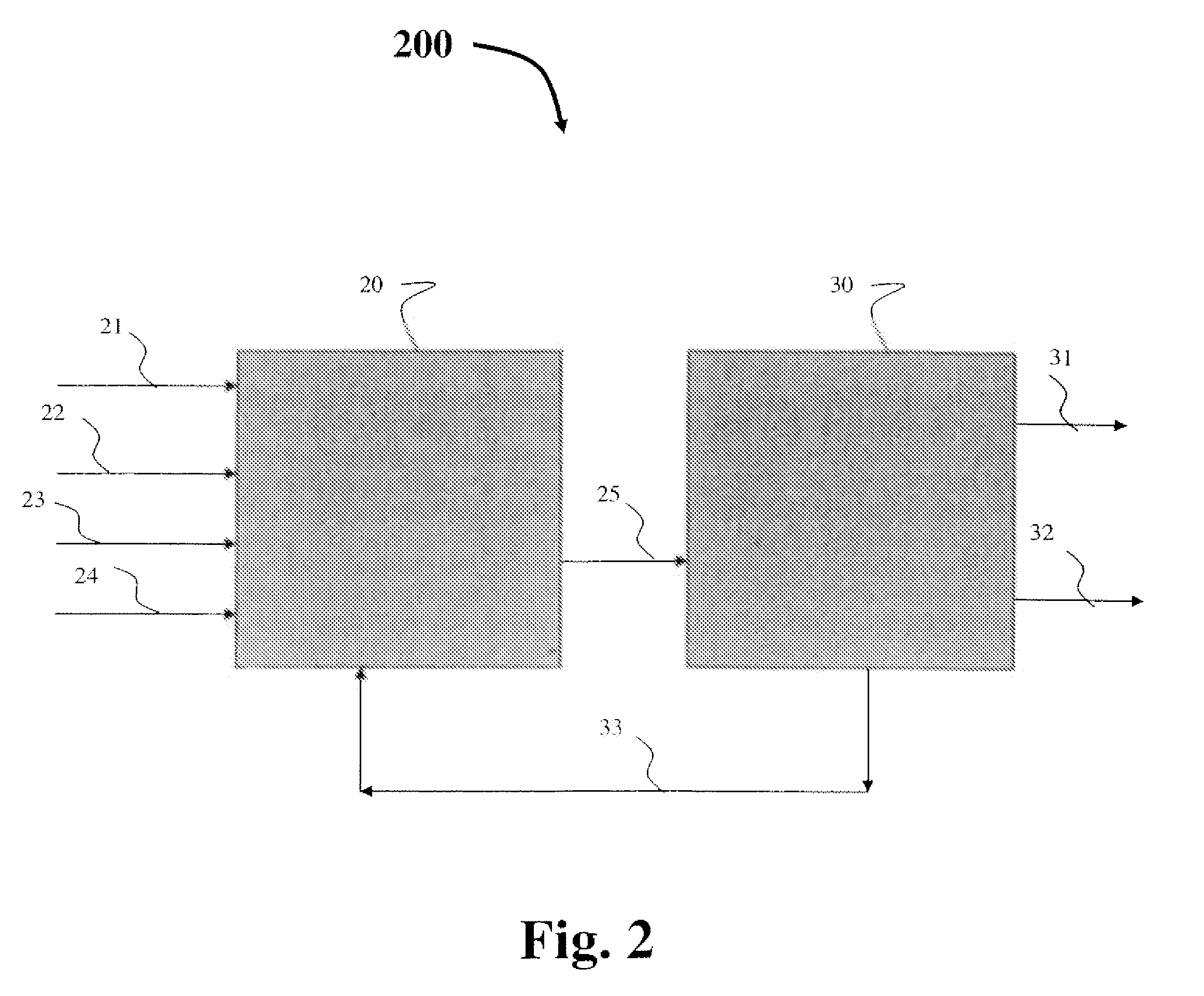Process for producing propylene oxide
- Summary
- Abstract
- Description
- Claims
- Application Information
AI Technical Summary
Benefits of technology
Problems solved by technology
Method used
Image
Examples
example 1
[0126]Propylene (100 g), TS-1 catalyst (10 g), methanol (25 g), and o-dichlorobenzene (295 g) are added to a 750-mL jacketed reactor with a stainless steel cooling coil, thermocouple, mechanical stirrer, addition funnel, N2 purge with gas scrubber, and reflux condenser / cold finger combination. About 35 wt % / aq. hydrogen peroxide (70 g) is charged to the addition funnel, and then added to the reactor slowly after the propylene / catalyst / methanol mixture is brought to 25.5° C. The mixture is stirred at 600 rpm, and the exothermic reaction raises the temperature of the mixture up to 40° C., where the temperature is maintained using the cooling coil.
[0127]Samples are taken from the reactor and then analyzed by gas chromatography (GC). When the reaction is deemed complete by analyzing propylene oxide via GC (after 60 minutes), both phases are analyzed by GC and the amount of peroxide remaining is determined by titration with sodium thiosulfate. The results of this experiment are as follow...
PUM
 Login to View More
Login to View More Abstract
Description
Claims
Application Information
 Login to View More
Login to View More - Generate Ideas
- Intellectual Property
- Life Sciences
- Materials
- Tech Scout
- Unparalleled Data Quality
- Higher Quality Content
- 60% Fewer Hallucinations
Browse by: Latest US Patents, China's latest patents, Technical Efficacy Thesaurus, Application Domain, Technology Topic, Popular Technical Reports.
© 2025 PatSnap. All rights reserved.Legal|Privacy policy|Modern Slavery Act Transparency Statement|Sitemap|About US| Contact US: help@patsnap.com



